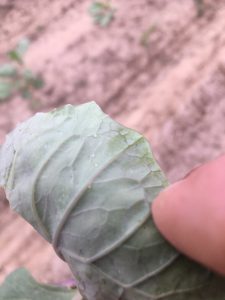Insect Update
By Will Gay
Diamondback Moth pressure has been low in the county with a few exceptions. Mixed populations of beet armyworm, fall armyworm, corn earworm, and cabbage looper have been observed in most fields to some degree. It appears that BT insecticides are working well on these mixed populations but some growers have decided to use an additional insecticide in some cases. Coragen would be a good choice to provide good residual worm control (not for diamondback moth larvae) when silverleaf whitefly populations are present. UGA entomologist, Stormy Sparks, has collected data in the past on collard that shows decreased activity of coragen on whitefly when a penetrating surfactant is not used. This would not affect activity on worm pests because they feed on the surface of the leaf and would still ingest the coragen. I have also observed several growers using rimon this fall as well to control mixed populations of lepidopteran pests in brassica crops. Rimon possesses several weeks of residual activity (new growth after application would be considered nontreated) and may possess some activity on diamondback moth larvae if the population has not built up resistance. In diamondback populations that are susceptible to rimon, some lab work has recently been conducted to show activity of rimon on egg hatch-out.

